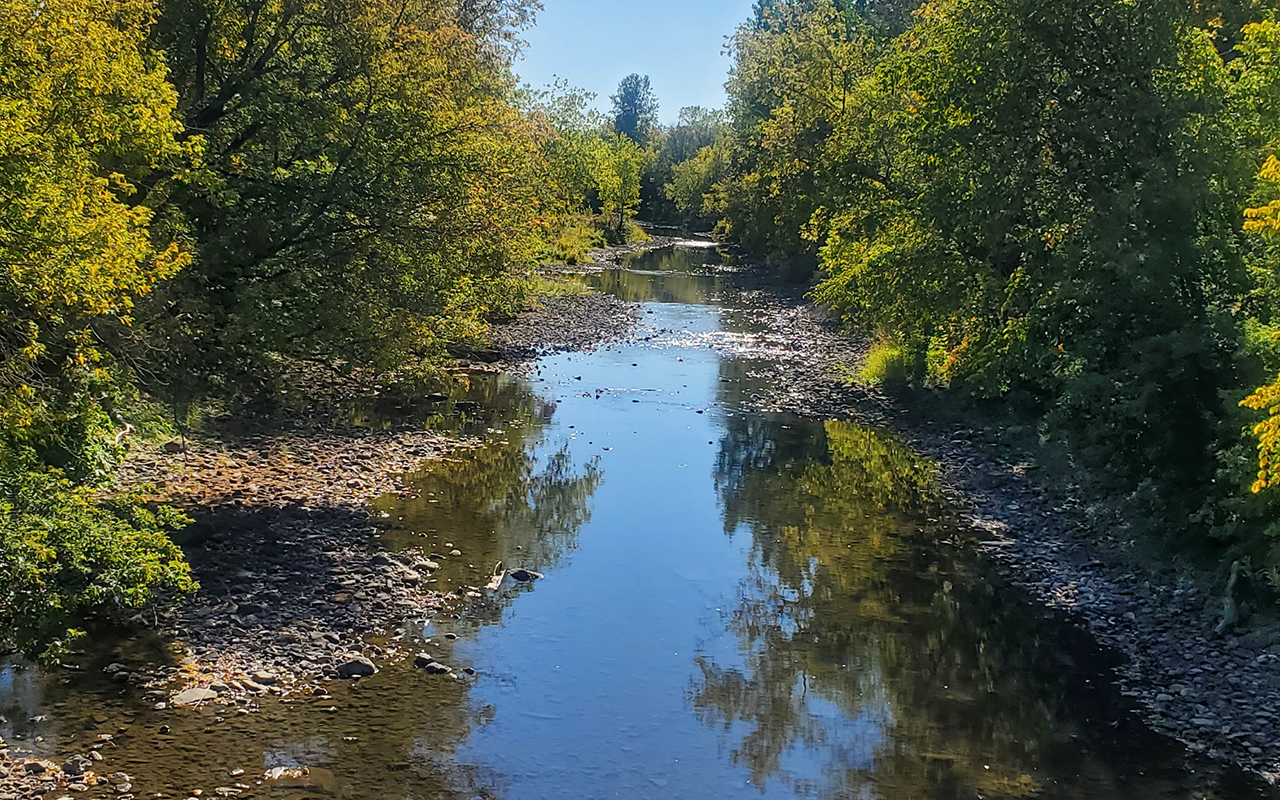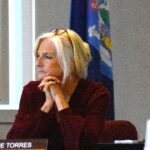
MADAWASKA, Maine — Farmers in Aroostook and Penobscot counties can now benefit from multiple USDA Farm Service Agency programs to help bring some relief from the prolonged drought.
Aroostook County slipped into a severe drought status last week, making more assistance available.
As the situation enters week 12, most of The County is at extreme drought status, or D2, which is characterized by low soil moisture, lack of widespread rainfall, drying vegetation and low stream flows. But a portion of central to northern Aroostook is at the severe status, according to the United States Drought Monitor. If a portion of a county is in severe drought, the entire county receives that designation.

HOULTON, Maine — September 18, 2020 — A view of Pearce Brook in Houlton, with water level significantly reduced as an effect of the drought afflicting Aroostook County. (Alexander MacDougall | Houlton Pioneer Times)
Severe drought will cause widespread loss of crops, distressed Christmas tree farms, financial issues for dairy farmers, increase in business for water haulers and well drillers, some wildlife disease outbreaks, reduced water flow, increase in water temperatures and dry wells.
Some producers are reporting yield losses of 40 percent and some even higher on hay, grains and even potatoes, said Doreen Conlogue, Aroostook County executive director of the USDA in Presque Isle.
“Precipitation doesn’t appear to be in the long-range forecast. and every evening on my 37-mile commute home I see well drillers in different locations on Route 1,” Conlogue said. “If we don’t get some significant rain before winter, I worry that many livestock producers will run out of water for their animals.”
Assistance available to farmers includes the Livestock Forage Program (LFP) and the Emergency Livestock Assistance Program (ELAP).
The LFP provides payments to farmers who report grazing losses, according to Amanda May, program specialist with the Maine state office of the USDA Farm Service Agency. Payment amounts depend on acreage, number of livestock and severity of the drought. Farmers can receive one month of payments with a D2 status, and can qualify for three months of payments at D3.
The ELAP can aid livestock producers who provide documentation of losses resulting from water hauling costs.

WOODLAND, Maine — September 4, 2020 — Woodland farmer Tom Drew stands in front of hay that was recently delivered to his farm through a fundraiser secretly organized by over 100 friends to help him out amid this season’s drought. (Chris Bouchard | Aroostook Republican)
Aroostook and Penobscot counties qualify for other programs, such as the Emergency Conservation Program (ECP) and the Non-insurable Crop Assistance Program (NAP). Once a county meets D2 status for eight weeks in a row, they become eligible for emergency loans at a low-interest rate.
Conlogue said many growers have called regarding the ECP and LFP programs. She knows of at least four growers who are eligible for ECP because their water sources for livestock are “down to a trickle” or completely dry.
“We’ll also be able to pay producers for grazing losses through the Livestock forage program and for those that are hauling water to their livestock, we can make payments through the ELAP program,” Conlogue said.
Kevin Barnes, farm loan manager for the USDA’s Farm Service Agency, said the emergency loans become available once a disaster has been declared. The funds are intended to be used for production costs, to replace essential property and pay for essential family living expenses. The applicants must show that they suffered at least a 30 percent loss in crop production or livestock and must apply within eight months of the date of the disaster declaration.
“On a personal level, we take pride in the successes of our local growers, as well as sympathize with them during times of difficulty,” Barnes said. “They can expect that everyone at FSA will do their best, using the programs at hand, to help these growers get through this rough patch and back on the path to financial prosperity.”
Tom Gordon, policy and planning coordinator for the office of the commissioner for the Maine Department of Agriculture, Conservation and Forestry, said while there is a possibility for showers next week, it doesn’t look likely for this week.







